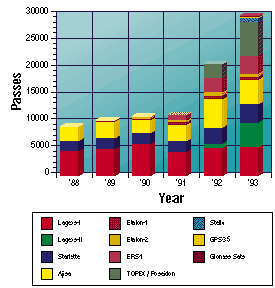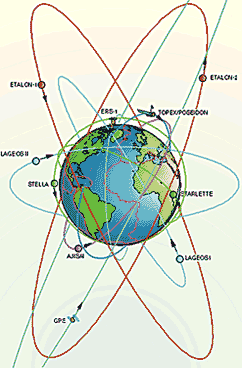Quick Links
Belmont Report - Technology
SLR Technology is Rapidly Advancing
Data Yield
SLR data yield has improved by a factor of three over the last six years through:- Real-time data processing,
- Satellite pass interleaving,
- System upgrades,
- Additional operating shifts for Topex/Poseidon, and
- Additional Satellites.

The Crustal Dynamics Data Information System (CDDIS), located at NASA/GSFC, is the repository for the global SLR data set. These data, both full-rate and on-site normal points, are available via electronic access and/or magnetic tape.
Mission Requirements for the SLR Network
Mission support by the SLR Network has expanded dramatically during the last ten years, for a variety of missions, and the predicted need for SLR will continue to grow in the next decade.

Taking this expanding role into account, performance and efficiency enhancements are underway:
- On-site processing for 24-hour data availability to the users;
- Computerization of logistics, safety, and administrative functions;
- New system controllers to reduce operator interactions;
- Use of Internet to facilitate communications and reduce costs;
- Hardware upgrades to increase reliability and data quality control.
NGSLR will Reduce Station Operating Costs
NGSLR (formerly SLR 2000) is a fully automated, standardized, eye-safe, low-cost, subcentimeter system, which would replace existing manned SLR systems in the next decade. SLR 2000 is a low-cost, compact, autonomous laser ranging system for the next century.





